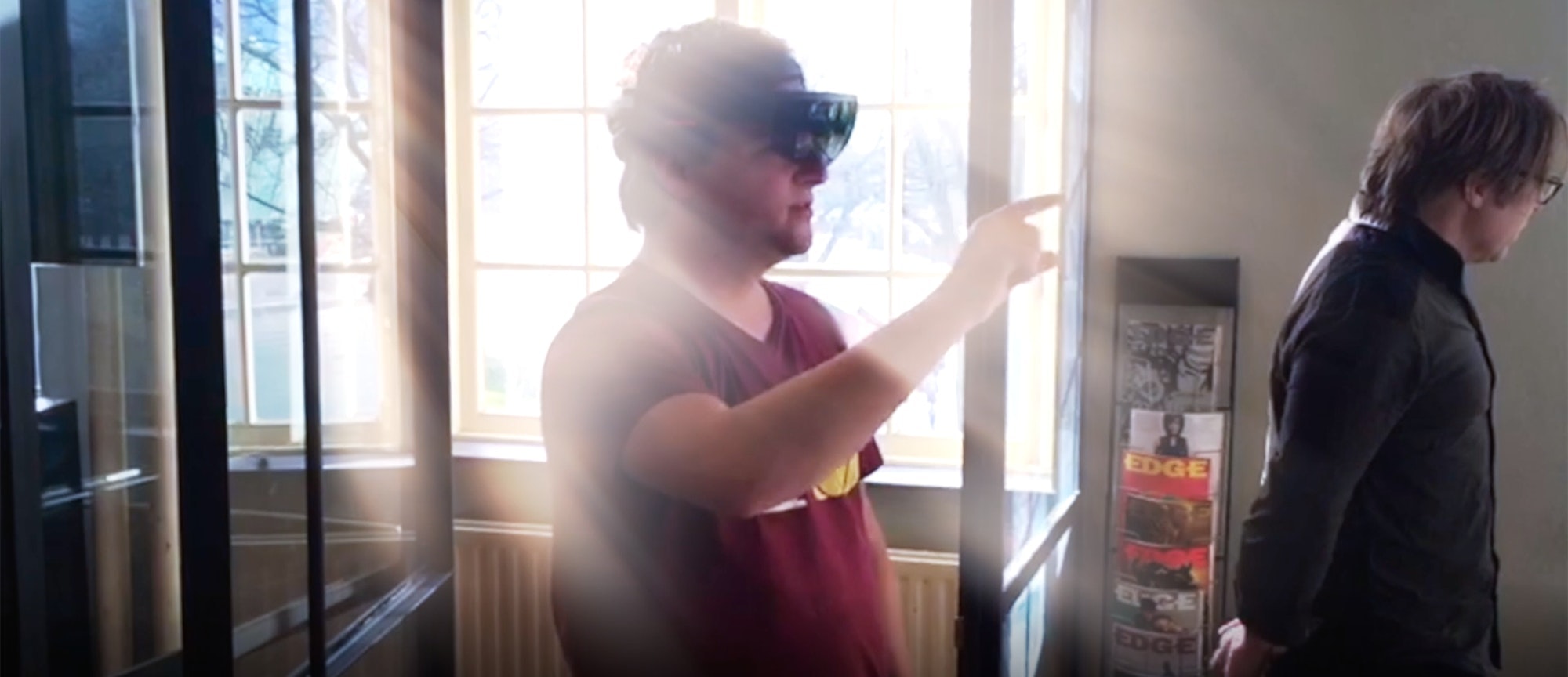Augmented reality
The effect of an extra layer

More than a gimmick?
Augmented Reality (AR), just like Virtual Reality (VR), captures the imagination. However, the two are not the same. With VR the user is totally withdrawn from reality, immersed in a virtual world, whereas AR layers digital elements onto a person's perception of reality. But to what extent can AR be used to ease the work of professionals? Is it truly workable or is it a gimmick for early adopters?
Partner IJsfontein
In this lab project we worked together with IJsfontein. IJsfontein designs and develops solutions for playful (digital) learning by applying augmented and virtual reality, among other things. We visited them to get inspired, to learn from their experiences, and to gain knowledge about the Microsoft HoloLens, the first self-contained, holographic computer that allows real-time engagement and interaction with digital content and 3D holograms.
Support for experts
In a five-day innovation sprint we explored lots of possibilities. After doing desk and field research, we brainstormed about possible AR applications that could add value. Ultimately, we decided to solve a problem for air traffic controllers: experts who work with multiple sources of information (radar, view from tower). How can AR support them in guiding aircraft in conditions with poor visibility?
Test flight
We have made a paper prototype of the view from an air traffic control tower and an extra AR information layer on transparent plastic. After this we started testing. We asked colleagues to imagine being air traffic controllers and in this role to perform tasks such as: 'Make sure that two aircraft keep a sufficient distance from each other' or 'Let aircraft X land safely while considering there are geese on runway Y'. First, the test persons performed these tasks solely based on information on the radar and the view from the tower, and subsequehtly with the extra AR layer.
Strength and challenges of AR
No, our testers were not air traffic controllers and thus not the ideal test group. Therefore, it's difficult assessing how relevant and accurate the AR information is. However, after this first innovation sprint, we did have the following impressions:
- AR helps users to make connections faster and easier, and with decision-making.
- AR contributes to consultation and cooperation between air traffic controllers because it provides a clearer total picture.
- Personalization (eg filtering of information based on position) and a user-friendly display of (moving) information in a moving image are interesting design challenges.
AR has the potential to become a real game changer in the workplace. But before it's truly workable some design explorations are still required. On to the next sprint!
Our services
Interested in our approach?

Susanne van Mulken
Strategy director